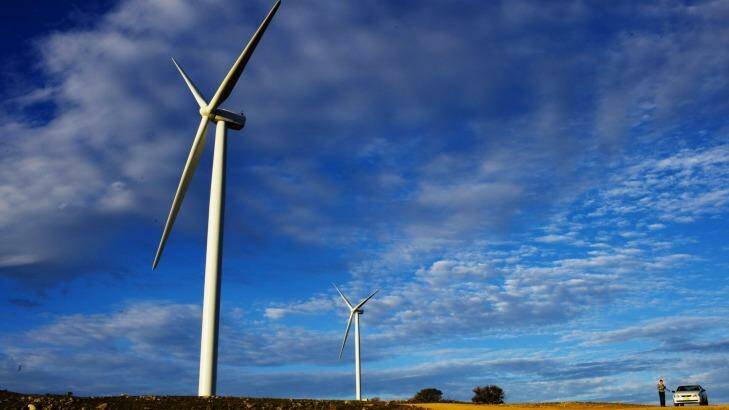
Wind power is now the cheapest electricity to produce in both Germany and the UK, even without government subsidies. It's the first time that threshold has been crossed by a G7 economy.
But that's less interesting than what just happened in the world's largest economy, according to a Bloomberg analysis.
To appreciate what's going on in the US, you need to understand the capacity factor. That's the percentage of a power plant's maximum potential that's actually achieved over time.
Consider a solar project. The sun doesn't shine at night and, even during the day, varies in brightness with the weather and the seasons. So a project that can crank out 100 megawatt hours of electricity during the sunniest part of the day might produce just 20 per cent of that when averaged out over a year. That gives it a 20 per cent capacity factor.
One of the major strengths of fossil fuel power plants is that they can command very high and predictable capacity factors. The average US natural gas plant, for example, might produce about 70 per cent of its potential (falling short of 100 per cent because of seasonal demand and maintenance). But that's what's changing, and it's a big deal.
For the first time, widespread adoption of renewables is effectively lowering the capacity factor for fossil fuels. That's because once a solar or wind project is built, the marginal cost of the electricity it produces is pretty much zero-free electricity - while coal and gas plants require more fuel for every new watt produced. If you're a power company with a choice, you choose the free stuff every time.
It's a self-reinforcing cycle. As more renewables are installed, coal and natural gas plants are used less. As coal and gas are used less, the cost of using them to generate electricity goes up. As the cost of coal and gas power rises, more renewables will be installed.
The virtuous cycle has begun
Subscribe now for unlimited access.
$0/
(min cost $0)
or signup to continue reading

Wind and solar have long made up a small fraction of US electricity - about 5 per cent in 2014. But production has been rising at an exponential rate, and those two energy sources are now big enough to influence when coal and natural gas plants are kept running, according to Bloomberg New Energy Finance (BNEF).
There are two reasons this shift in capacity factors is important. First, it's yet another sign of the rising disruptive force of renewable energy in power markets. It's impossible to brush aside renewables in the US in the same way it might have been just a few years ago. "Renewables are really becoming cost-competitive, and they're competing more directly with fossil fuels," said BNEF analyst Luke Mills. "We're seeing the utilisation rate of fossil fuels wear away."
Second, the shift illustrates a serious new risk for power companies planning to invest in coal or natural-gas plants. Historically, a high capacity factor has been a fixed input in the cost calculation. But now anyone contemplating a billion-dollar power plant with an anticipated lifespan of decades must consider the possibility that as time goes on, the plant will be used less than when its doors first open.
Capacity Factors Take a Sharp Turn

Most of the decline in capacity factors is due to expensive "base-load plants that are being turned on less because of renewables," according to BNEF analyst Jacqueline Lilinshtein. Plants designed to come online only during the highest demand of the year, known as peaker plants, play a smaller role. In either case, the end result is that coal-fired and gas-fired electricity is becoming more expensive and the profits less predictable.
The opposite is true of wind and solar, as well as new battery systems that can be paired with renewables to replace some peaker plants. Wind power, including US subsidies, became the cheapest electricity in the US for the first time last year, according to BNEF. Solar power is a bit further behind, but the costs are dropping rapidly, especially those associated with financing a new project.
The economic advantages of wind and solar over fossil fuels go beyond price. Still, it's remarkable that in every major region of the world, the lifetime cost of new coal and gas projects are rising considerably in the second half of 2015, according to BNEF. And in every major region the cost of renewables continues to fall.
Bloomberg

